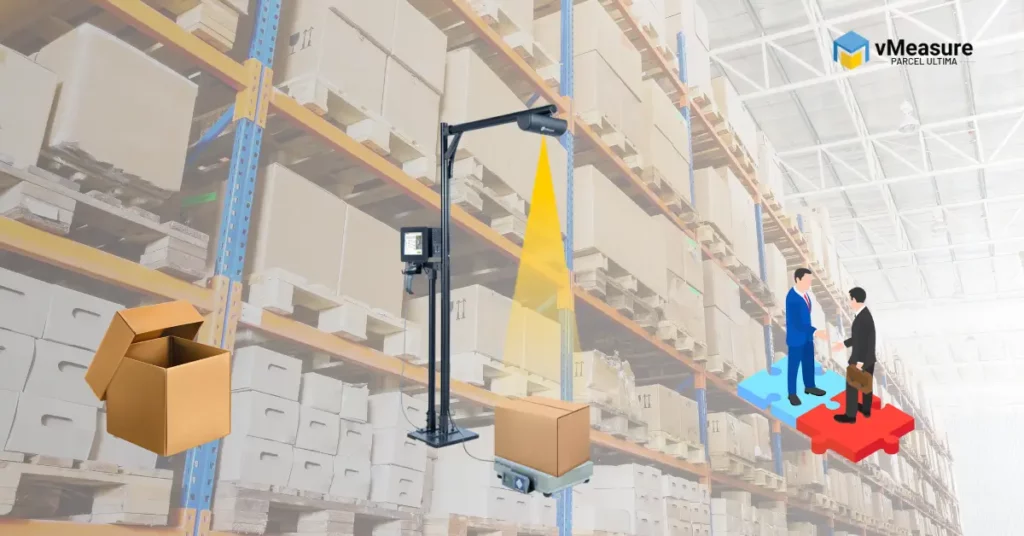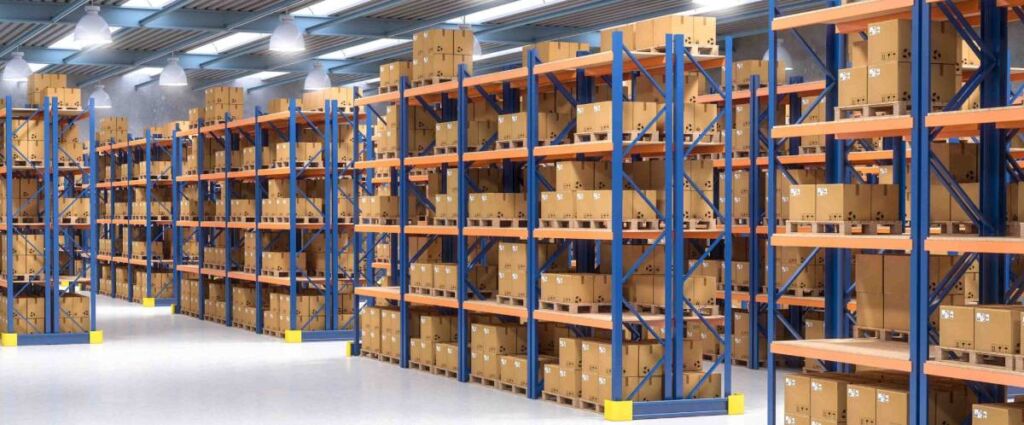Table of Contents
Introduction
In the world of LTL shipping, where stuff from different senders piles up in one truck at the warehouse, being accurate and efficient is the name of the game. Imagine the warehouse as a busy place, each package doing its part to make sure things move smoothly. Here, accuracy makes sure packages end up where they’re supposed to, and efficiency keeps things running without costing too much.
Now, think about a situation where the size of every package isn’t just a number but a way to save money. That’s what we’re talking about—a world where we speak the language of warehouses, and LTL carriers are the main folks ensuring things work well. Come along as we explore a world where the size of things isn’t just a number but a tool in the warehouse and LTL world.
Understanding Dimensioning in LTL Shipping
Definition and Significance
In the core of LTL shipping, dimensioning is all about figuring out how big and what shape each package is. It was once a somewhat dull work, but these days it’s a wise choice. It’s a calculated move that impacts how we load cargo onto trucks and utilize available space in the cargo area, not just a package measurement exercise.
Traditional Methods vs. Modern Dimension systems
In the old days, measuring stuff was a hands-on job. People would measure packages manually, which often led to mistakes. Now, let’s fast-forward to today. Technology has taken the spotlight, making the process much smarter. Instead of relying on manual measurement, we leverage things like dimension systems to do it automatically. This not only speeds things up but also makes the package measurements more accurate.
Impact on Shipping Costs and Efficiency
Think of dimensioning as the quiet director ensuring everything runs smoothly and costs stay low. Picture a well-coordinated dance where accurate measurements are the secret choreographer. The goal of this precision is to ensure that packages reach their destination on schedule, not only to maximize quantities. Envision a world in which errors are reduced, delivery times are shortened, and every shipment reaches its destination on schedule. That’s the impact of smart dimensioning—saving money and making things work like a well-tuned machine.
Key Challenges for LTL Carriers
Inaccurate Dimensioning
But in the world of shipping, there are challenges. Picture the first issue — inaccurate dimensioning. This not-so-great note doesn’t just mean spending more money; it also causes tension between the people sending the packages and the ones delivering them.
- Cost Impact: Think about getting a bigger bill than expected. Inaccuracy doesn’t just mean mistakes; it means spending more money.
- Relationship Strain: It’s not just about money; inaccurate dimensioning can cause problems between the people sending stuff and the ones delivering it. Nobody likes surprises, especially when it comes to paying.
Space Optimization
In the warehouse, using space efficiently is paramount, ensuring goods fit seamlessly. But inaccurate measurements could be a distruption, leading to a misstep where trucks end up carrying more air than actual products. Precise package measurements are key to maintaining the smooth flow, optimizing space, and ensuring trucks transport goods effectively.
- Air vs. Cargo: Imagine trucks carrying more space than actual stuff. It’s like shipping empty spaces instead of real goods.
- More Shipments, More Costs: This misstep can lead to more shipments, which means spending more money to get things done. It’s like a process can becomes more expensive with each wrong move.
Cost Overruns
Now, let’s talk about the end part, marked by a surge in costs—unexpected charges because the measurements weren’t right. A common practice in the industry, called dimensional weight pricing, highlights how crucial it is to get package measurements exactly right. This is a big deal because it determines how much things cost, emphasizing the importance of being precise in measurements in the warehouse and shipping industry.
Benefits of Implementing Dimension systems
Accuracy in Freight Measurement
Now, let’s talk about measuring things the right way. Think of it as properly sizing up objects. The silver lining of the story is that, like a well-developed movie character, we have clever techniques to measure things precisely. Ensuring that everyone is aware of the situation and treating one another equally is more important than simply having the statistics correct.
- Transparent Transactions: Imagine having a clear window into what’s happening. Accurate measurements make sure everyone is aware of the situation, leading to transactions that are open and honest.
- Fair and Equitable Dealings: It’s important to make sure everyone gets a fair deal, not just the people crunching numbers. Getting package measurements right lays the foundation for treating each other equally.
Efficient Use of Cargo Space
Now, let’s talk about the next thing: making the best use of space in trucks. It’s like a smart strategy where trucks move efficiently, carrying as much as they can without wasting any space.
- Optimized Dimensions: Picture trucks being really clever about how they move, using space like experts. It’s not about carrying empty space; it’s about making sure every inch is used for actual goods.
Cost Reduction and Increased Profitability
As we finish up this part of the story, a big idea becomes clear—saving money and making more of it. It’s like everyone giving a big cheer for doing things well. And you know what? Dimension systems are the heroes, playing a significant role in getting this applause.
- Operational Efficiency: Think of it like everyone cheering because everything was done excellently. Operational efficiency is like everyone standing up to show their appreciation, and dimension systems are the stars of the show.
- Pivotal Role: It’s not just about clapping hands; it’s about acknowledging the main players. Dimension systems are the MVPs, ensuring things run smoothly, and everyone is happy.
This part is all about being super accurate in measuring, using space wisely, and making everyones job done exceptionally well. Dimension systems play a crucial role in ensuring the shipping story isn’t just good but outstanding.
Choosing the Right dimensioner
Factors to Consider – Choosing the Right dimensioner
Let’s now discuss selecting the appropriate tool for the task. A dimensioners effectiveness is largely determined by its accuracy, speed, ease of integration, and capacity to handle more as demands increase.
- Accuracy: Think of it like having a GPS that never gets lost. The chosen dimensioner needs to be right on target with package measurements.
- Speed: Imagine a fast car on an open road. The dimensioner should be quick, making sure things move smoothly without slowing down.
- Integration Ease: It’s like fitting a new puzzle piece into an existing puzzle. The chosen dimensioner should easily blend in with what’s already there, making everything work together.
- Scalability: Imagine a warehouse operation expanding, much like a shelving system that can accommodate more goods as the inventory grows. The dimensioner should be like that—able to handle more as things get busier.
Implementing Dimension systems in Warehouses
Training and Adoption Strategies
As we get ready to put the chosen dimensioner into action, a new task comes up—training the team. It’s like preparing the stage for training programs to kick in. The focus is on giving warehouse staff the skills they need to smoothly bring the new technology into their daily work.
Overcoming Resistance to Change
As we encounter change of resistance, a common obstacle in the adoption of new technologies, things grow more fascinating. Consider it a challenge that lies ahead of us. The key is clear communication, like a surprise twist in the story. We talk openly, addressing concerns, and highlighting the benefits to overcome resistance and build a culture of innovation in the warehouse. It’s about ensuring everyone understands why the change is happening and how it will make things better.
Measuring ROI of Dimension systems
Quantifiable Metrics for Success
Picture some new players in the scene—quantifiable metrics. Think of them as yardsticks that show us how things are improving. We are examining three key domains: measurement accuracy, spatial efficiency, and cost reduction. These are the methods we use to determine whether the dimensioner we implemented in the warehouse is effective.
Long-term vs. Short-term Gains
Now, let’s talk about the difference between things that pay off quickly and those that take time. Imagine it like finding the right balance between getting results fast and waiting a bit for bigger benefits. We see how some good things, like getting our package measurements right, make us happy right away. On the flip side, making customers happier and saving money in the long term becomes more apparent as time goes on in the warehouse and shipping industry.
Comparative Analysis with Non-Implemented Solutions
Now, let’s delve into the conclusion of this section, which resembles a face-off between shipping companies utilizing sophisticated dimension systems and those that do not. The key point is the significant contrast, showcasing the actual advantages of utilizing advanced technology. It’s akin to shining a spotlight to highlight all the positive outcomes that arise when these cutting-edge tools are applied in the warehouse and LTL (Less Than Truckload) industry.
Future Trends in Dimensioning for LTL Carriers
Technological Advancements
Imagine a new scene where technology takes the main stage. Things like artificial intelligence and machine learning become the stars of the show. They’re like the writers of a story, creating a tale where smart algorithms predict things, and data analysis happens automatically. It’s like peeking into a future where these high-tech tools become everyday things we use.
Integration with AI and Automation
Picture a scene where dimension systems, like measuring things accurately, join forces with artificial intelligence and automation. It’s like having smart systems as the helpers, adjusting to how things change in shipping and what people want. This creates a lively story where decisions happen right away, like in real-time. It’s all about making things work together smoothly and adapting to what’s happening around us.
Conclusion – Is It a Right Fit?
In summary, the exploration of dimension systems for LTL carriers reveals their crucial role as heroes in streamlining shipping operations. These dimensioners, acting as MVPs, address challenges, enhance transparency, and contribute to cost reduction. The key lies in selecting the right tool, implementing it effectively, and measuring tangible benefits. As carriers embrace advanced dimensioning, they outperform counterparts, showcasing the transformative impact of technology. Looking forward, the integration of AI and automation promises a dynamic future of real-time decision-making and adaptability in the shipping industry.
Is dropshipping legal?
Yes, dropshipping is legal. However, like any business, it’s crucial to comply with local laws, tax regulations, and business licensing requirements. Consult with legal professionals to ensure your business adheres to regulations.
How profitable is dropshipping?
Dropshippers can make 20% to 30% profit in each sale. However, only 10% to 20% of them are profitable in the first year. Success depends on factors like product selection, marketing strategies, and efficient operations.
How can I choose reliable suppliers?
Research is key. Look for suppliers with a proven track record, positive reviews, and clear communication channels. Consider ordering sample products to assess quality.
Who provides customer service in dropshipping?
Customer service is typically handled by the dropshipper. Though the supplier handles product-related issues like defects or damages, the dropshipper manages inquiries, order tracking, and general customer support. Building strong communication with suppliers is essential for a smooth customer experience.
How much do I need to invest to start dropshipping?
The exact amount of investment varies. However, starting a dropshipping business doesn’t cost as much as opening a brick-and-mortar store. You just require finance to set up an online store, spend on marketing, and pay the subscription fees for dropshipping platform. But keep in mind that success often correlates with strategic investments in marketing and customer acquisition.
Ready to revolutionize your shipping operations? Unlock efficiency, cost reduction, and transformative benefits with advanced dimension systems for LTL Carriers. Choose precision, implement with ease, and optimize for success. Take the first step toward a streamlined future – Contact us Now!
For more content like this join our newsletter!




